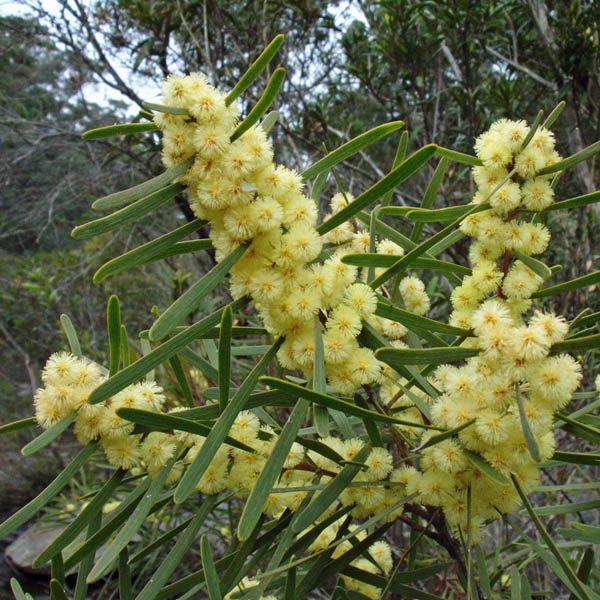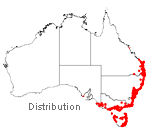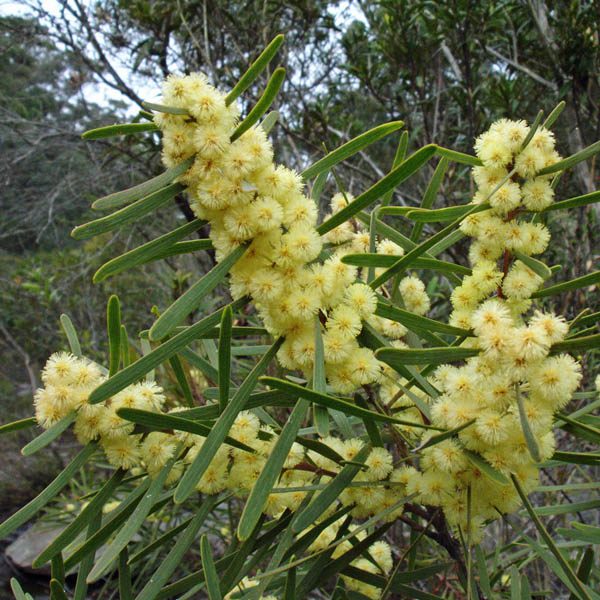
Acacia Suaveolens
Common name: Sweet Wattle
I grow best: Shrub to tree up to 8m
• Attracts birds, native bees and invertebrate creators
• Flowers June to October
• Well drained or sandy soils
• Cultural uses
• Eastern Suburb Banksia Scrub
Looks like: Sweet scented wattle (A. suaveolens) draws it name from the small clumps of flowers that occur during winter and early spring. In its native habitat it is one of the earliest flowering of the wattles.A. suaveolens has bi-pinnate leaves only in very juvenile specimens. Phyllodes (modified leaf stalks) rapidly develop as the plant matures. The phyllodes are without hairs (glabrous) and are usually covered in fine white powder (glaucous). Like many other acacias it has a comparatively short life span with shrubs rarely living longer than 15 years. Flowering will usually occur 2 years after germination. The flowers are usually in groups of between 6 and 10. These flowers and seed pods provide a food source for a variety of birds and invertebrates.
Habitat & Distribution: It is common in the bushland surrounding Sydney and occurs from southern Queensland down the east coast into Tasmania. It also has populations on several off shore islands, the Grampians and in the border region of South Australia and Victoria. It inhabits coastal areas of low altitude ranging from secondary dunes up to an altitude of 300m. Populations have also been documented in the Budawang ranges and the Blue Mountains, west of Sydney. Seeds are comparatively easy to germinate simply by soaking in boiling water for approx hour. Seed scarification with sand paper has also proved successful. In a horticultural sense it is very useful mainly due to its size. Other acacias regularly planted in gardens such as A. baileyana and A. longifolia can become large trees which will over time crowd out many smaller plants. A. suaveolens reaches a maximum height of around 3m. Highly variability in both foliage and growth patterns led to the naming of several subspecies in the past though these have been largely discounted.Maintenance of established trees is comparatively easy. Selective pruning can encourage more vigorous leaf growth. Growing in its natural habitat on coastal areas it is also mildly salt tolerant though not as much as A. longifolia. In its natural habitat it is killed by fire and therefore relies on stored seed reserves in the soil. A. suaveolens ideally grows in well drained coastal soils but also grows on deeper/heavier soils such as those of parts of Ku-ring-gai Chase National Park. It is also frost tolerant down to temperatures of
Distribution:

Traditional uses: The seeds of a large number of wattle species are edible and may be harvested for grinding into a flour, for the production of bread, or an edible paste. The plant is valued as a source of food, medicine and for the quality of its timber, used in the production of a range of tools and weapons. Inclusive of boomerangs, spear throwers, spears, digging sticks, parrying shields and clubs. The gum of a number of wattle varieties is edible, with the flavour akin to that of a mild sugary sweetness, which can become unpalatable when offset by high amounts of the plant’s tannin. The gum in some cases was utilised in the production of a drink, which served as remedy to coughs, colds and chest infections. Gum could also be applied directly to cuts and abrasions as an antiseptic preparation, either in a solid or powdered form.

